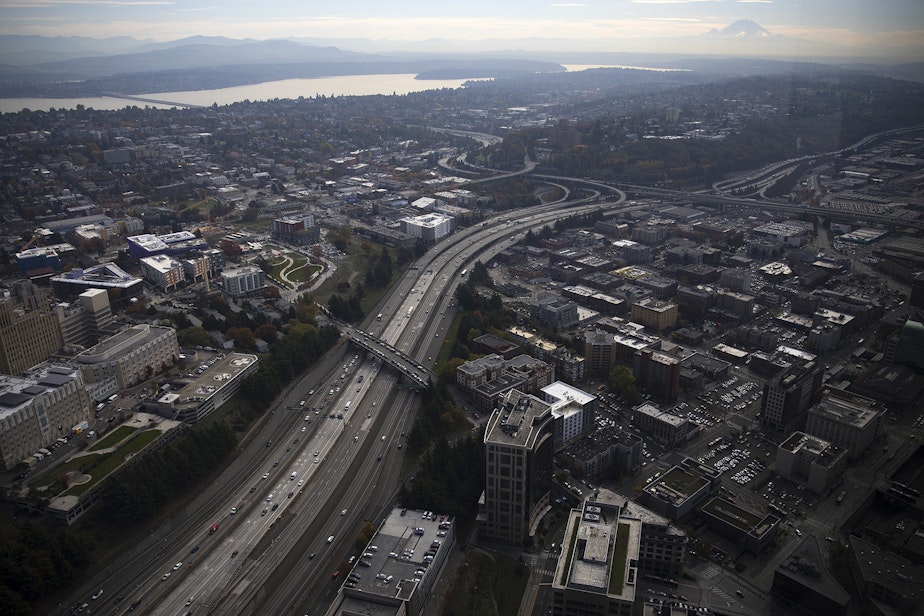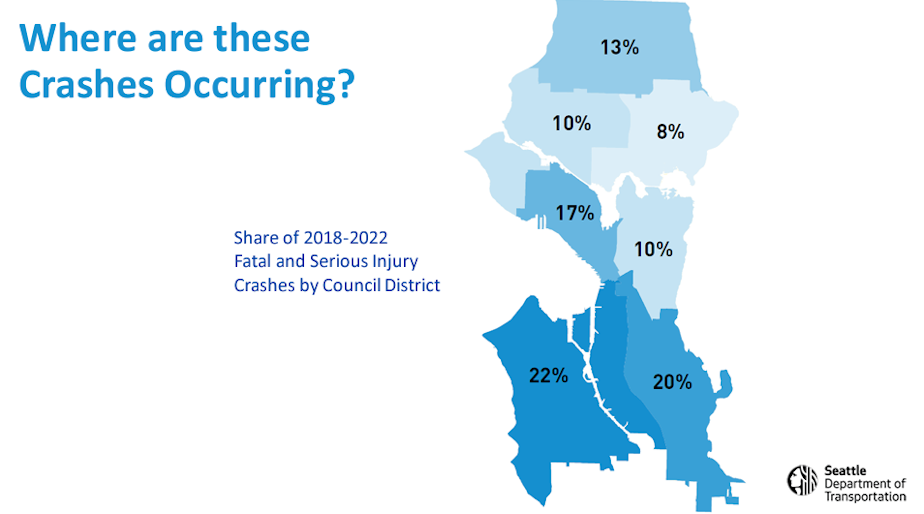Seattle has a long road ahead to eliminate all traffic deaths by 2030

Seattle city leaders say they want to end traffic deaths and serious injuries by 2030. But with some collisions still on the rise, it’s unclear if the city can make that goal.
At Tuesday’s Seattle City Council Transportation Committee meeting, the Seattle Department of Transportation's chief safety officer opened with a moment of silence.
“To recognize those people who have been impacted by deaths and serious injuries on our streets,” Venu Nemani said.
RELATED: Even with Vision Zero, traffic fatalities remain high in Seattle
More than 250 people in Seattle were injured last year in some sort of traffic collision, SDOT data shows. Nemani and his department are charged with bringing that number down to zero in less than six years.
Seattle launched that effort, called Vision Zero, in 2015 and since then the city has averaged about 28 traffic deaths per year.
Sponsored
There are some signs of hope. Car driver fatalities, for example, are down overall in Seattle after peaking in 2021.
RELATED: The challenges of designing safer Seattle streets
“But the story is slightly different on serious injury collisions,” Nemani said. “Across all categories, our serious injury collisions are going up.”
Car violence varies widely depending on where you live in Seattle. Between 2018 and 2022, 8% of collisions occurred in the northeast neighborhoods of the University District, Ravenna, and Laurelhurst. But southwest communities like West Seattle, Fauntleroy, and White Center experienced 22% of crashes.

Sponsored
About a quarter of all city streets are missing any form of sidewalk. The blocks most in need of a safe walkway are in south Seattle and north of Green Lake, according to SDOT.
Nemani told the committee Tuesday that SDOT is working on a three-year action plan to, hopefully, meet Vision Zero’s goals. He didn’t share too many specifics as the plan is still being finalized, but SDOT’s presentation said it will likely include “continuing speed limit reductions with safety corridor projects and implementing arterial traffic calming.”
Nemani said he anticipates the 2024-2026 action plan will be published within the next month.
RELATED: Pedestrian deaths fell modestly last year, but there's still a safety 'crisis'
That's likely good news for anyone who's been concerned for their safety on Seattle streets, including members of the Seattle City Council.
Sponsored
Councilmember Dan Strauss shared his experience of healing after being hit on his bike by a driver in 2004. Strauss told Nemani he wants to see SDOT do more and move faster to keep cyclists and pedestrians safe.
“The charge that I'm giving you today is that there are twice as many people as your data shows that are living with serious and chronic pain from being hit on our roadways,” he said.
RELATED: Can AI reduce traffic deaths? These Seattle engineers are putting it to the test
The department highlighted some bright spots in the city’s collision data. Crosswalk signals that give people more time to cross the street, for example, have helped reduce some turning crashes.
“These trends, while give us hope, also indicate that we have a lot more work ahead of us,” Nemani said.
Correction notice, 1:54 pm on Wednesday, 4/17/2024: The story previously cited collisions in northwest and southeast neighborhoods. It has been updated to reflect those collisions were in northeast and southwest neighborhoods.




